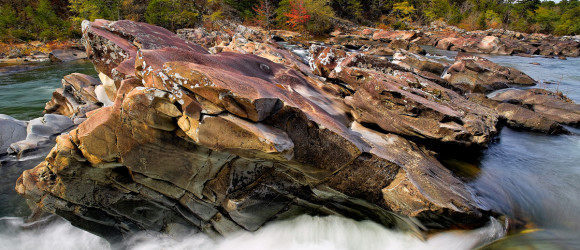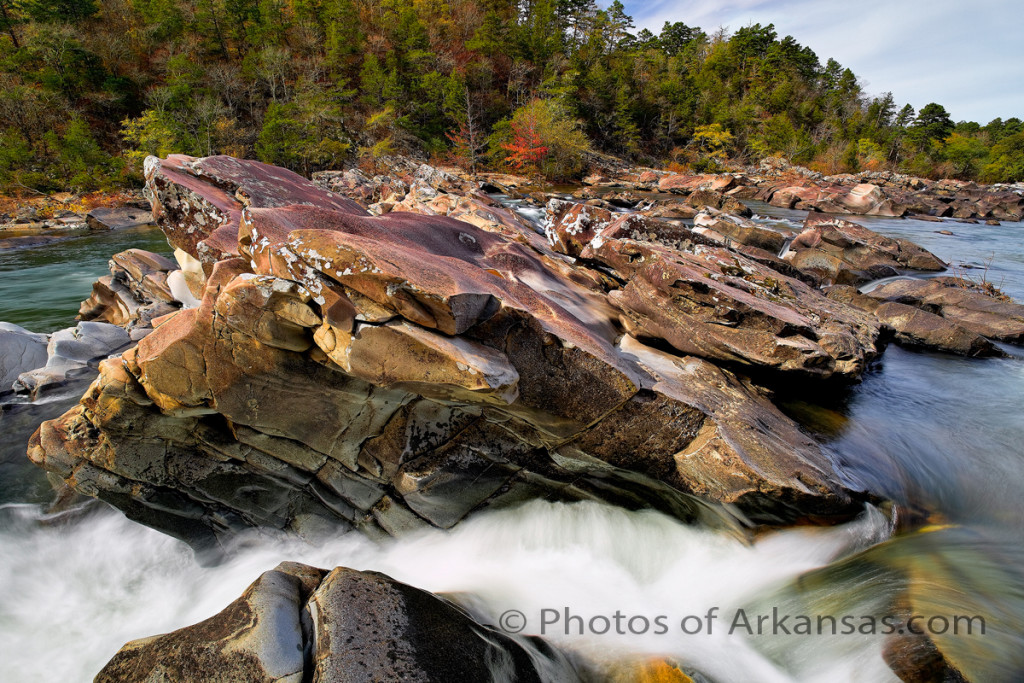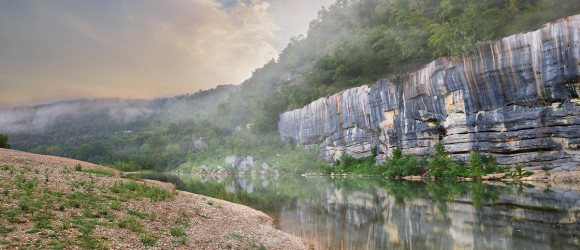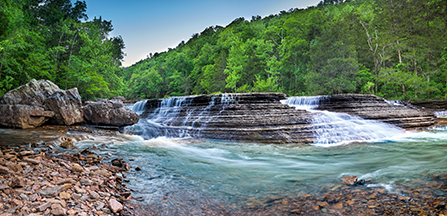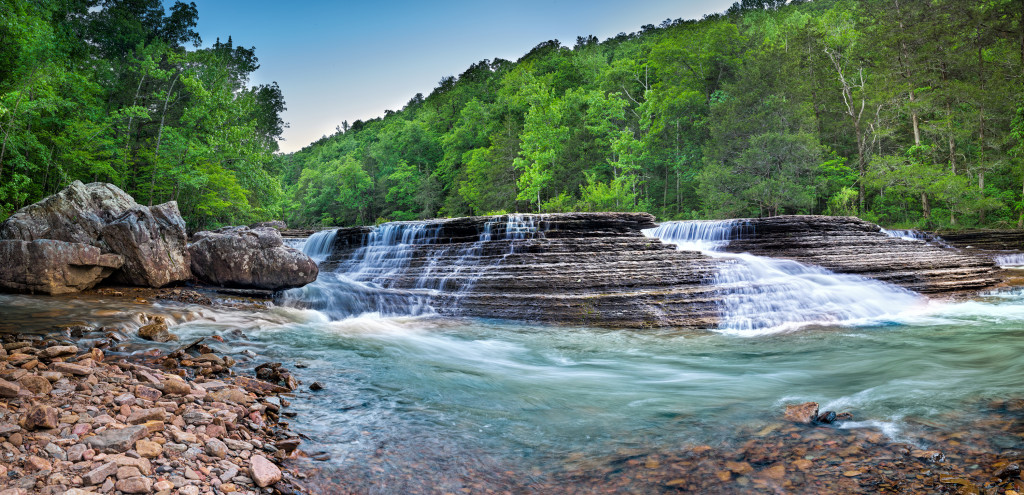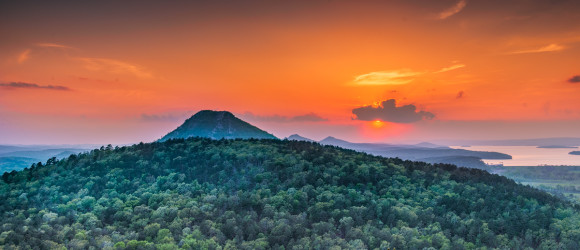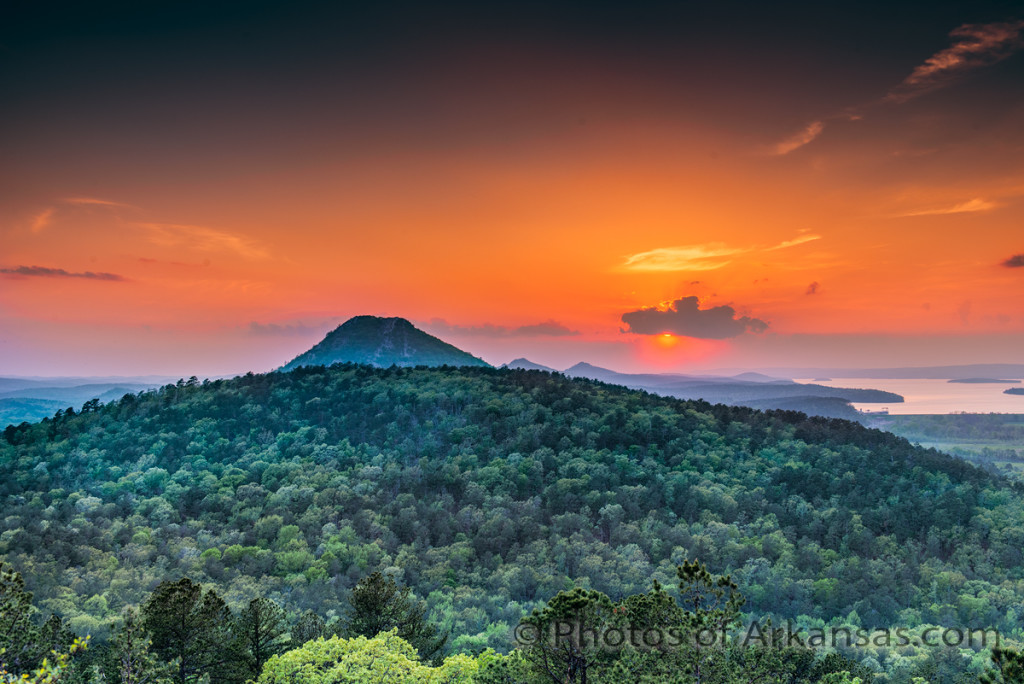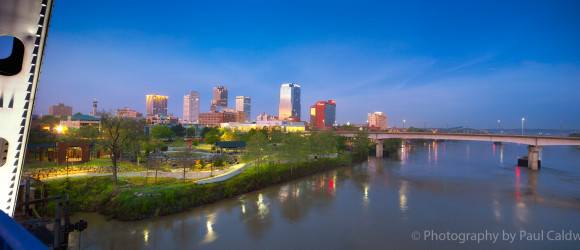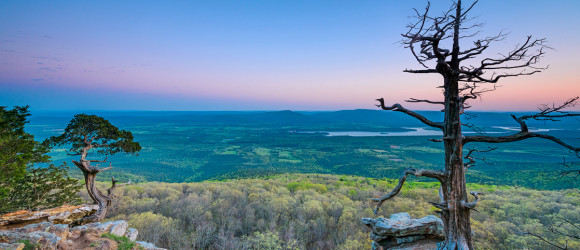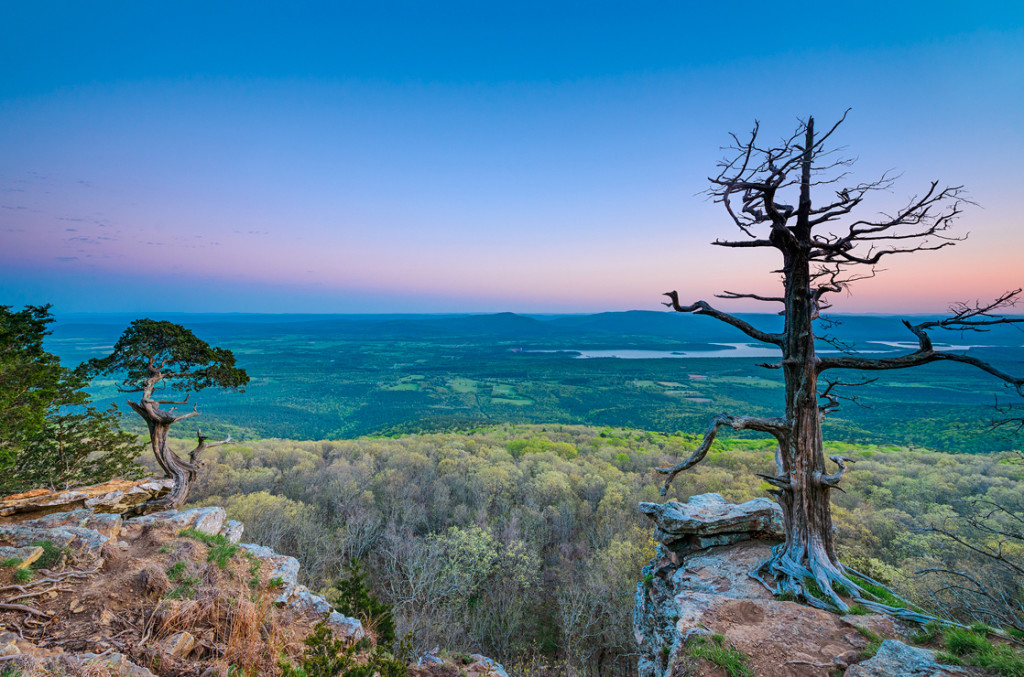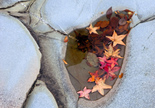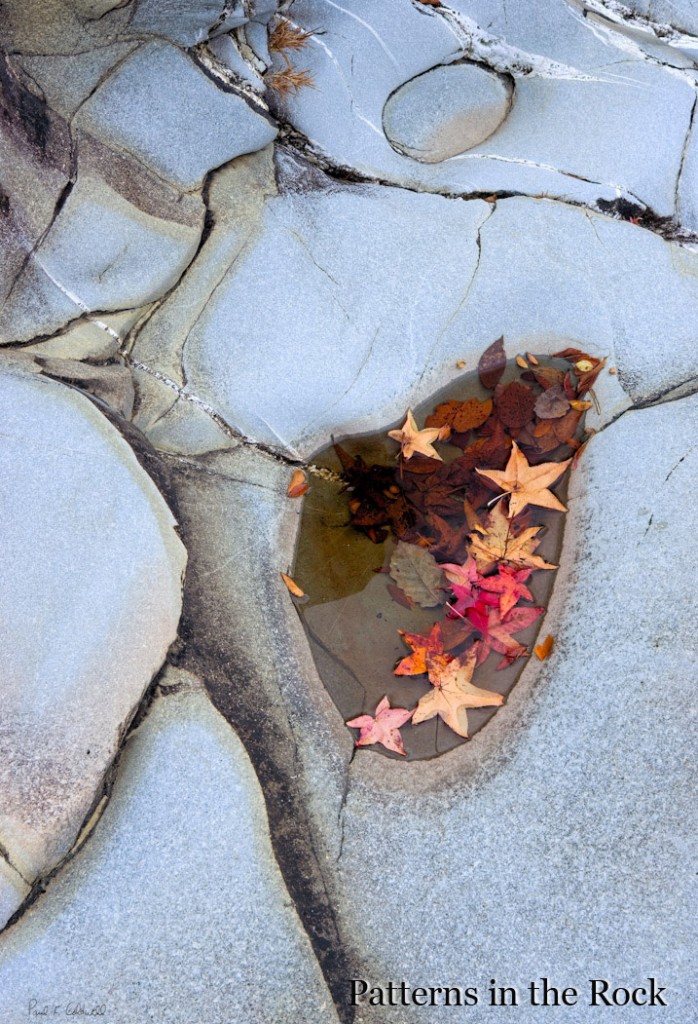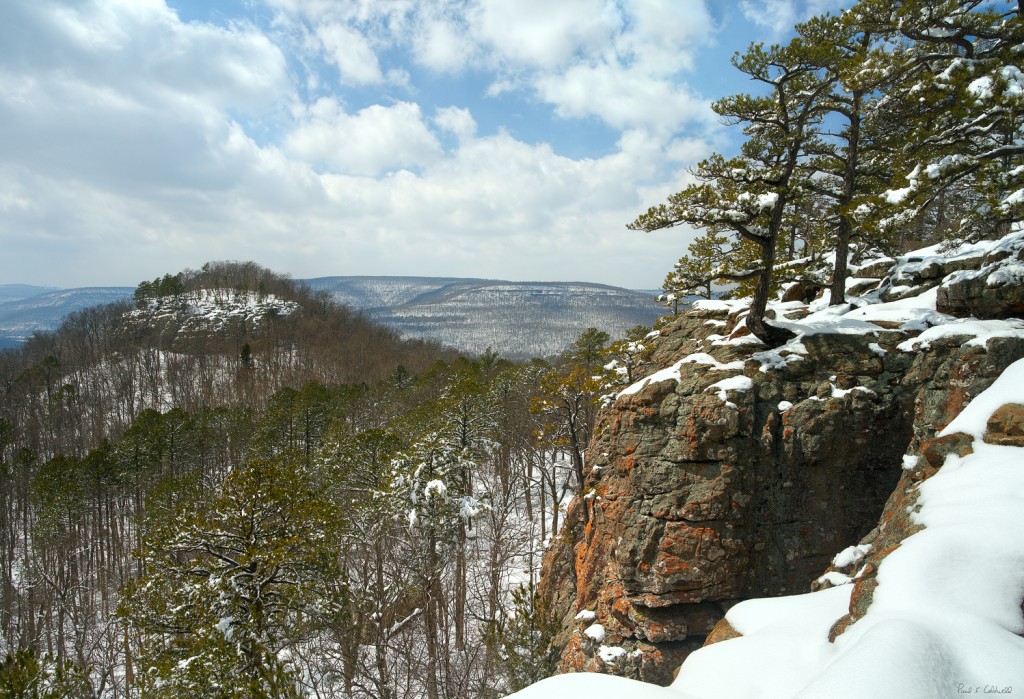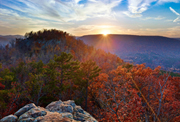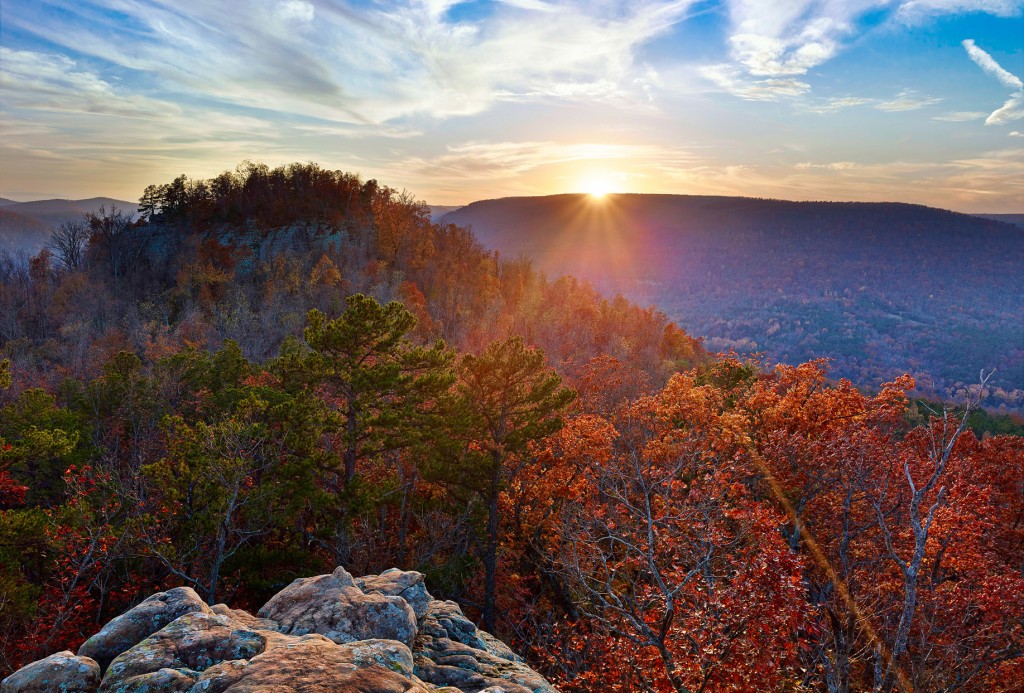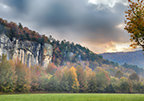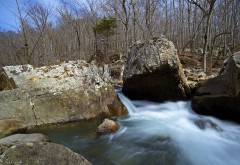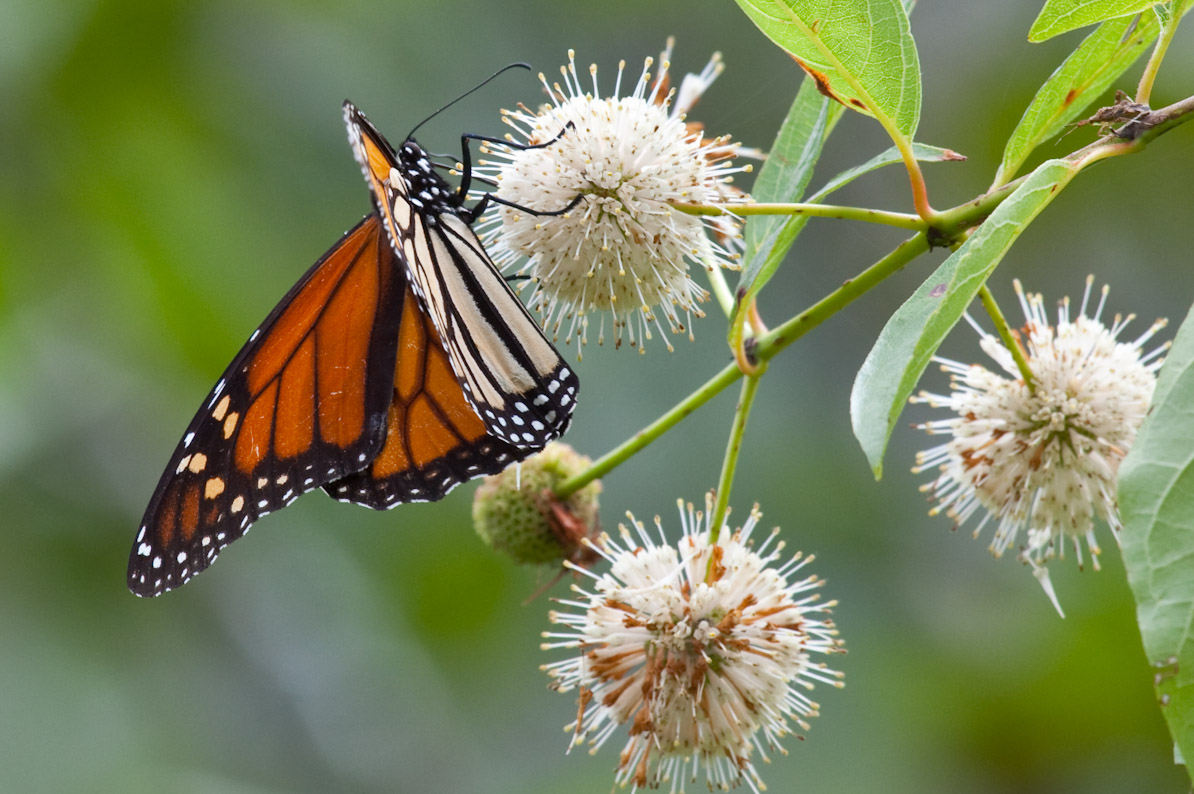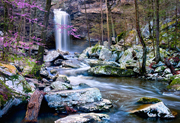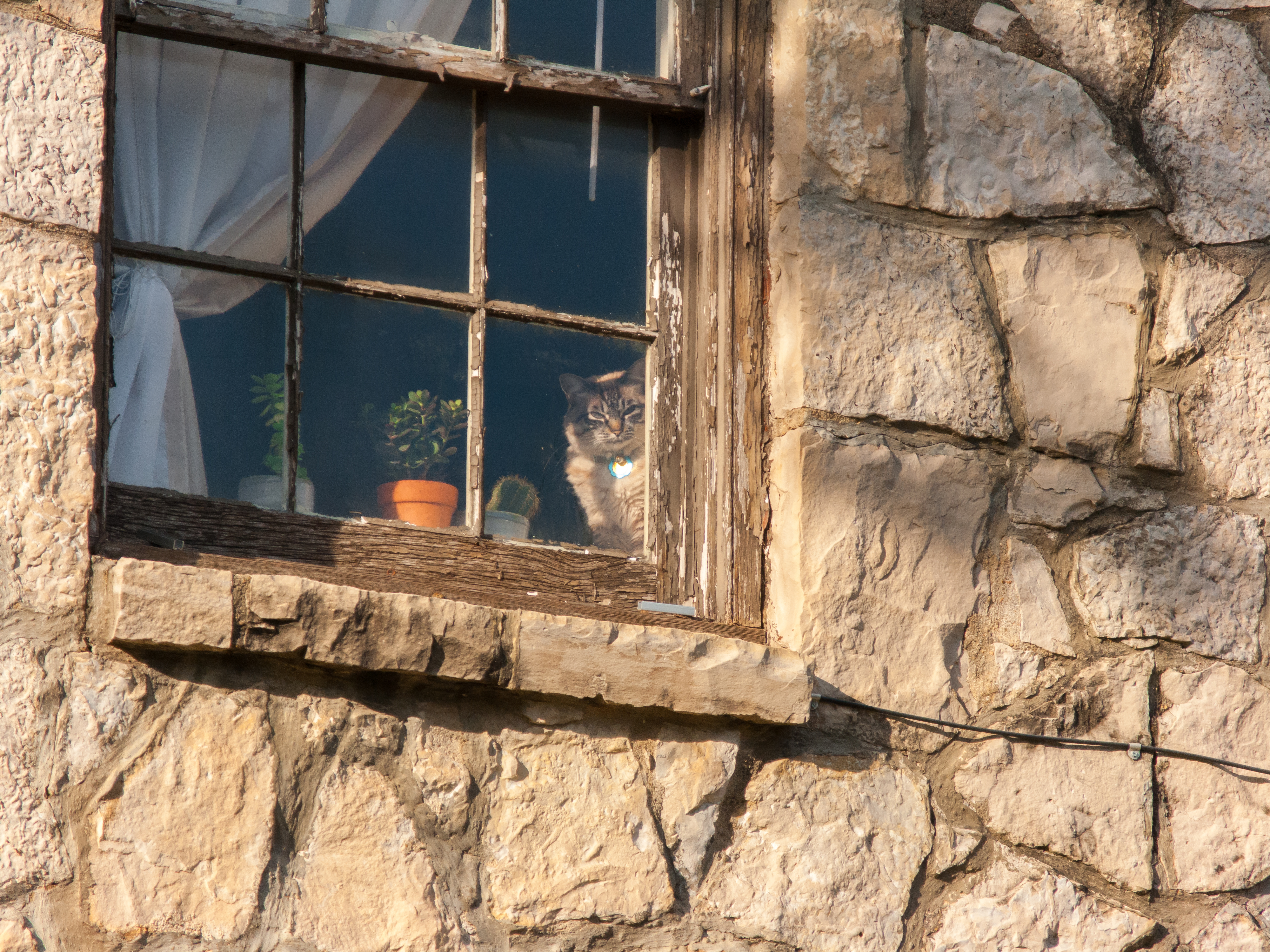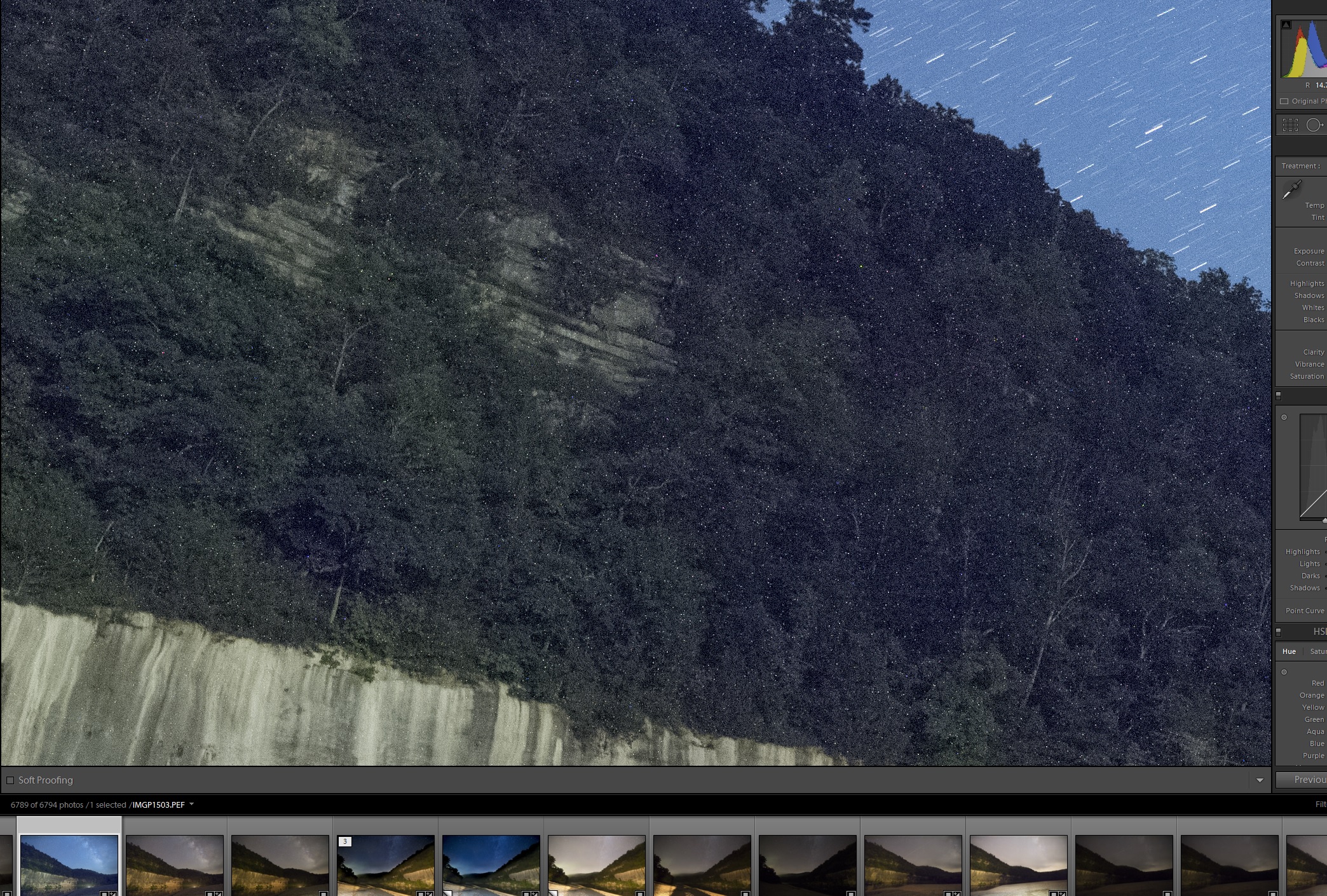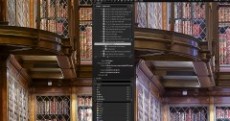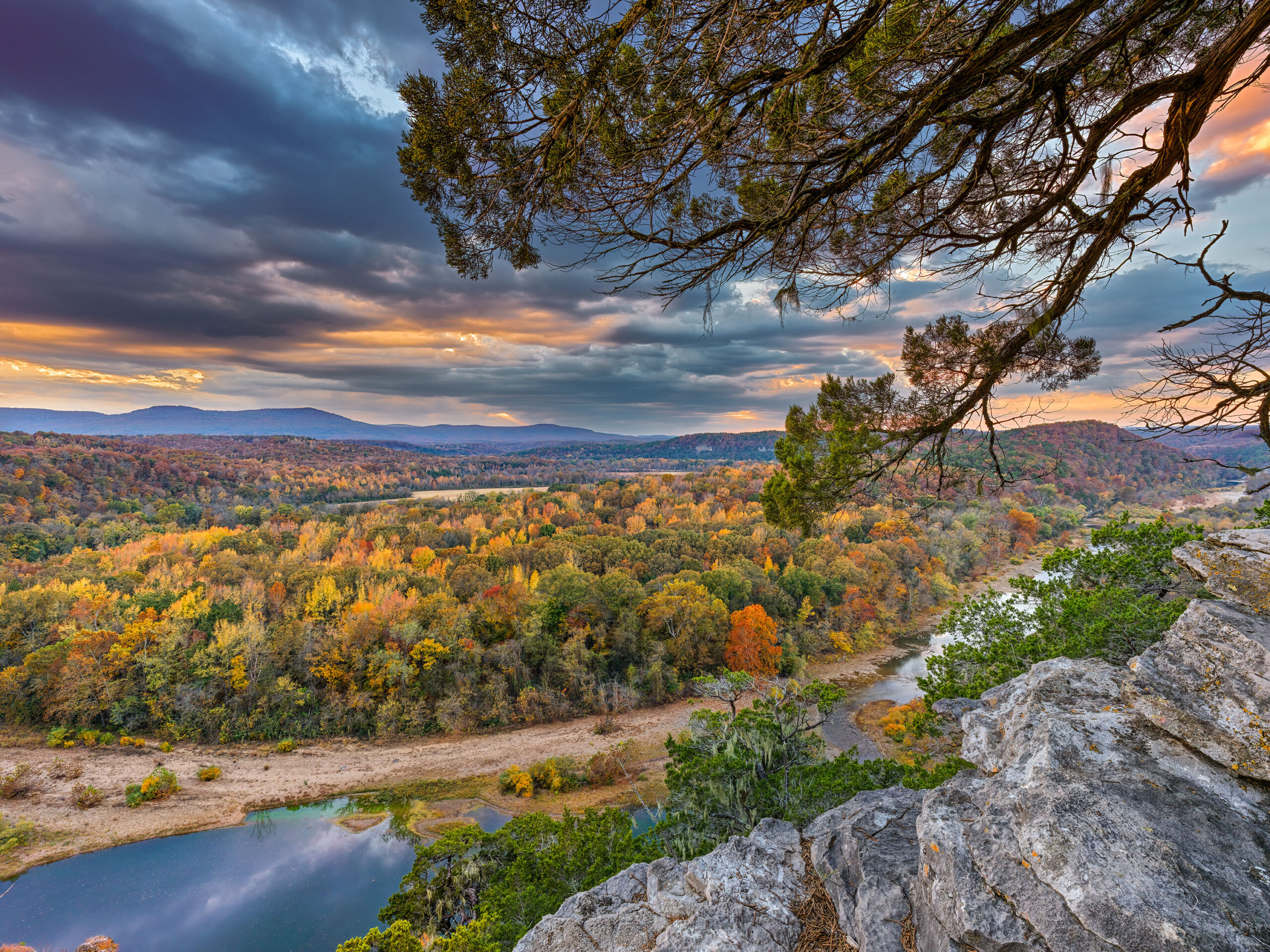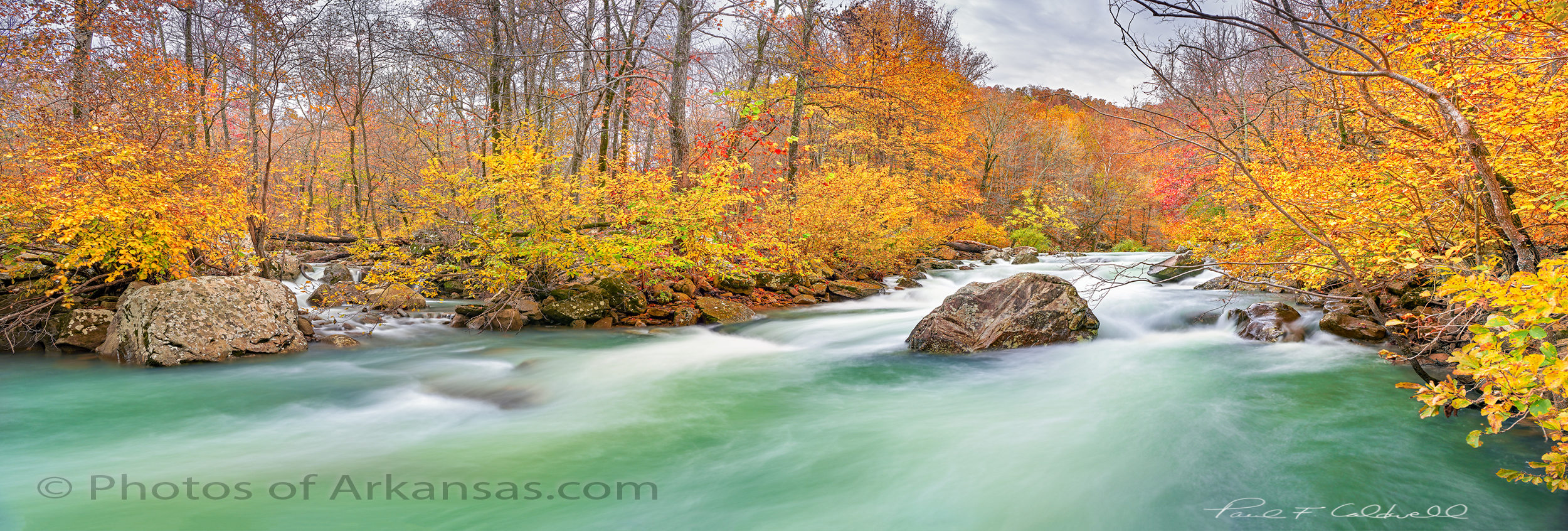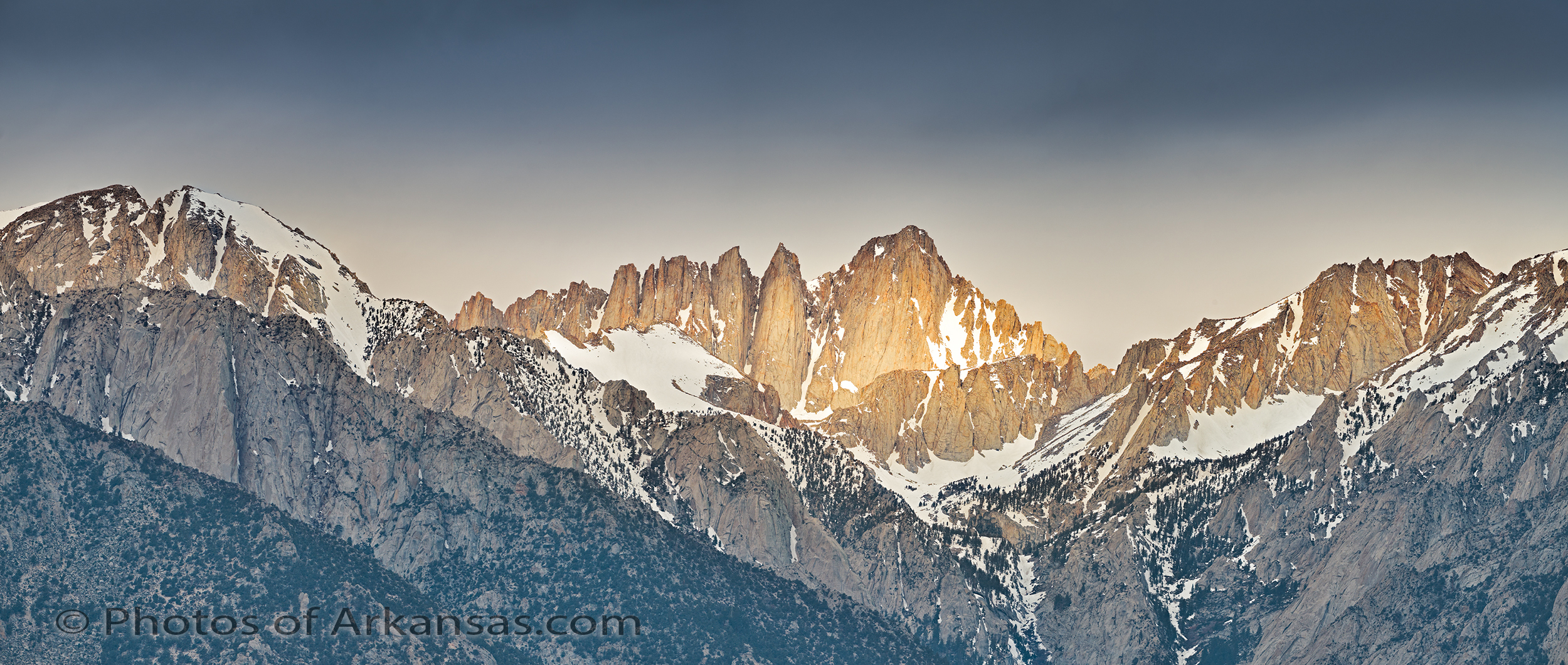08/22/16 Featured Arkansas Landscape Photography–The washing machine on the Cossatot River Southwest Arkansas
Taken with a Canon 5D MKII and 24mm TS-E lens, with a CL-PL and ND 0.9 filter installed, exposure time approximately 1.5 seconds.
You can find some excellent photographic opportunities on the Cossatot River, along with some of the best Arkansas whitewater. Go down there anytime the river is running over 500 cfs (cubic feet per second) and you can expect to see a lot of kayakers running the falls.
I like to hike the 6 falls when there is about 100 to 400 cfs max running the river. This allows you to make easy crossings and you can still get down close enough to the river to get some great angles. The river will run muddy right after a rain storm due to the massive amount of timber clear cutting in the area, so plan on heading down a day or so after a big rain.
You can easily hike down the entire left side (left side facing downstream) and there are 6 separate ledges which the river cuts through. Each has a unique rapid and name:
Cossatosser, Eyeopener, BMF, The Washing Machine, Whiplash, and Shoulder bone.
If you make it down there, remember that the sun will move across the river from left to right so the some of the best photograph will be early in the morning. The falls run due south. There are a ton of huge rocks that line the river and each of them will allow you a spot to setup for some great photos. The washing machine, featured in this photo has some of the best angles up on top of the ledge, but you need to cross over right above this small rapid. If the river is running too high, this can easily become a hazard so be careful. All the rocks are covered with slim moss and will be slick.
The rock is sandstone or something close and in the sun will take on a wonderful red-orange hue so try to make it on nice sunny day.
08/20/16 Featured Arkansas Photography–Early morning at Buffalo Point, Buffalo National River
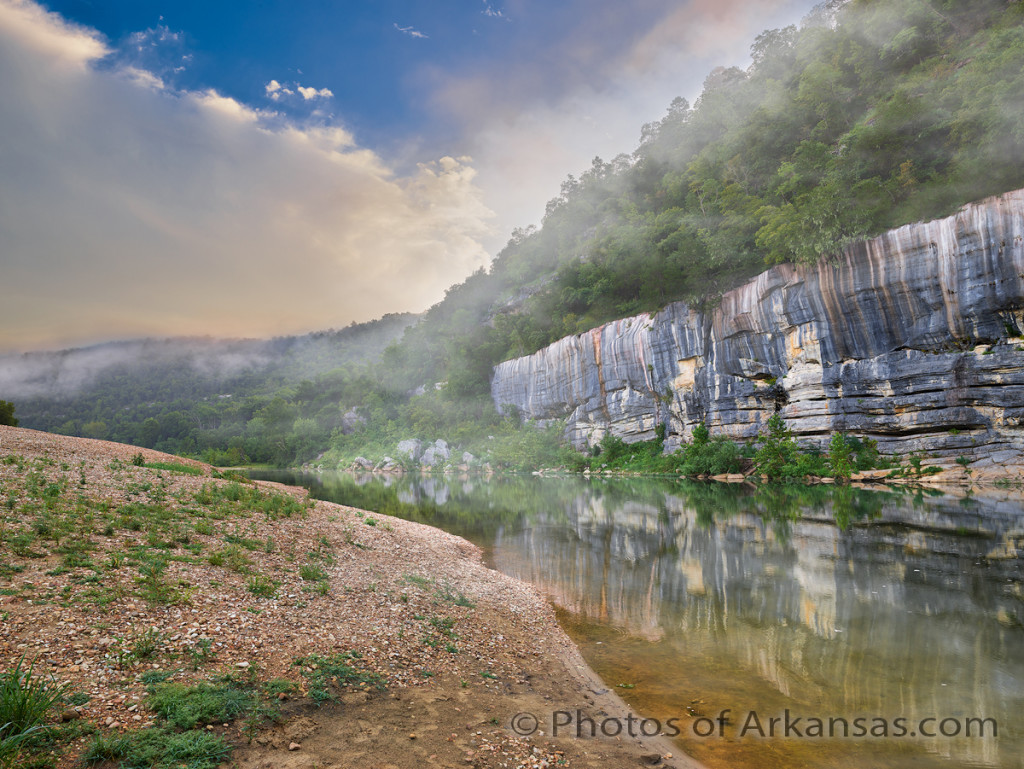
Early mornings are some of the best times to photograph the Buffalo River. This is from Buffalo Point.
Taken with a Phase One IQ100 and 35LS lens, no filters @ ISO 100 for 1/40th of a second F12 and Phase One XF.
While on a trip to the lower Buffalo River, I was able to spend the night at Buffalo Point Campground. This is the first campground that was built on the Buffalo, and dates back to the WPA and CCC days of the late 1930’s in Arkansas. Here you are pretty low down on the river as there is only about 20 or so miles left before the river runs into the White River. Buffalo Point is a very popular spot on the river as it has an excellent campground, and there is a great swimming hole below the large bluff on the far side of the river. From here you can take a quick float down to Rush which is about 8 miles or do down river. It’s a great float to take in the fall to enjoy the fall colors as most often there will be enough water for floating year round.
I was hoping to catch the early morning light burning off the fog but there was only a small amount of fog. However there was a large cloud bank moving in from the west and sun managed to pop the lower clouds along with the fog rising up towards the top of the bluff. I had the place to myself, which on this river is a rare event so I was able to have almost 45 minutes before the first floaters started to come down from Hwy 14 and break up the great reflection on the river.
The Phase One XF and IQ100 worked together very well on this occasion. I was using a tripod due to the slower exposure times and the fact that the 35LS lens is so heavy. The camera controls on the back of the IQ100 LCD made working with this scene very easy. I ended up shooting several manual brackets but due to the impressive dynamic range of the IQ100 sensor, I was able to create this image from one exposure. The 35LS lens performed quite well, giving me excellent details throughout the image.
05/25/16 Six Finger Falls on Falling Water Creek–Featured Arkansas Landscape Photography
- At May 26, 2016
- By paul
- In Featured Arkansas Photography
 0
0
Taken in two frames with a Phase One IQ100 and Phase One 35mm LS lens, raw files developed in Capture One, panorama stitching in Lightroom.
We had driven up to 6 finger falls to attempt a night shoot, which did not work out due to the clouds that rolled in, however during the sunset, the light did allow for a wonderful series of photographs. I love to get down low on the creek, below the falls and attempt to grab some short pans, as the normal medium format of 4:3 does not allow for very much to work with. I am not a big fan of cropping out the center of a shot to get to a pano, as you loose so much image in the process.
Normally, I would have used my rail to get a nodal solution, but I had forgotten it. Using the Arca D4 geared head, it was easy enough to get level for each shot, then go back to Lightroom to let it work it’s magic on the panorama. Lightroom with the new panorama feature does a great job on single row stitching and now they have added a feature called boundary warp, which really does a great job. In the past, I had always used software like Ptgui or Kolor’s panorama software, to get a cylindrical solution, as I am panning with a wide lens, (the 35mm in medium format is equivalent to about 22mm with a 35mm camera), still not that wide. The 35mm LS has a pretty good hyper focal range by F11 and I took this at F14. Due to the subject range and distance, I was not worried about losing details to diffraction.
For these shots, I used both a circular polarizer and a Neutral Density filter. The polarizer was from B+W and the ND filter from HiTech, (their new Firecrest line). This allowed exposure times of around 1 sec, at an ISO of 50. There was little to no wind blowing so I was able to get away with just two exposures.
The addition of the boundary warp in Lightroom has really made this type of photography more fun and much quicker to get to a solution.
05/05/16 Featured Arkansas Landscape Photography–Springtime sunset over Pinnacle Mountain
- At May 05, 2016
- By paul
- In Featured Arkansas Photography
 0
0
Taken with a Nikon D800e, Nikon 14-24 @ 14mm F 8, ISO 100, exposure bracketed in 3 frames and worked up in Lightroom with Topaz Clarity
The evening I took this, I have hoped for a bit more cloud cover, but the spring colors were out in full so I went ahead and worked up the shot. This was taken from one of my all time favorite spots over looking Pinnacle mountain. Here you are looking due west, so depending on the time of year, you can sometimes catch the sun setting right on top of Pinnacle. As I recall the best times for this are in late March and September, but it’s been a long time since I went after that shot.
Even with Nikon I went ahead and bracketed this shot, I feel many times that in protecting the shadows, I will blow out the highlights and they will never be recoverable. I worked this shot up once before a couple of years ago, but never got it where I liked it. Now with the HDR feature within Lightroom, I went back to the raw files and worked them up again. This time I got much better results and then worked on the file just a bit in Topaz Clarity. I am not sure why the sky went black at the top, but that is just how it worked out, I kinda of like it!
The HDR feature in LR has it’s problems, but most of the time I can do what I want and get the effects I am looking for so much easier than any other HDR tool I have ever used.
The spring colors in Arkansas just looked great on this evening so it all came together for me.
11/15/15 Featured Arkansas Landscape Photography–Autumn afternoon at Pinnacle Mountain State Park
Taken with a Nikon D800e, Nikkor 24-120 lens @ F8, ISO 100. Image taken in 3 parts and stitched together in PtGui and Photoshop.
This was just one of those days. I had been out a few times previously, but the conditions did not equal this afternoon. You have to wait until around 2:00 pm to get this shot as you want the sun over the back of your shoulder. The light was perfect and Little Rock had a much better fall than other locations in Arkansas. But the clouds, oh the clouds. They started out as just some small swirls but as I continued to shoot they grew into this massive line that was turned upwards. To get this type of a panorama, even with a 36Mp camera, I knew I would need to stitch. However since my subject (main subject) was all off in the distance, I did not worry about a tripod, or setting my nodal point. I didn’t need to, just aimed and shot. I was using the Nikon 24-120, and was in the 90mm focal range. The colors that afternoon were perfect also, but I did add a circular polarizer to help pop them some more and cut the glare. You can clearly see the exposed part of the trail heading to the summit. Pinnacle to me is best photographed from below as the view from the top is impressive, but surround by homes, roads and the like.
To make this image happen, I first converted the raw files in Adobe Lightroom, then opened them up in PtGui, (a panoramic stitching software). The image came together perfectly and at first I thought I was done. But on closer inspection, I found that during the stitching I had allow for blur on the center image. It was only on the right edge and looked like a VR user error. VR is Nikon’s vibration reduction that is built into some of their lenses. If you are panning you have to be care with VR as you can confuse the system and it will not be totally finished. When you take a picture like that the blur looks more like a rolling issue as some of the file will be fine but usually towards one edge you will pick up some vibration induced blur.
So I had to manually go back to another image and pull that one part back to this stitch. It was not as hard as I thought it would be and the overall came out fine.
Little Rock Sunrise from the Junction Bridge–05/14/15 Featured Arkansas Photography
- At May 14, 2015
- By paul
- In Featured Arkansas Photography
 0
0
Taken with a Canon 5D MKII and Canon 24mm TS-EII lens iso 100, F8. The Junction bridge in Little Rock, which is now only for foot traffic, offers a great view of downtown Little Rock. I love to catch the early morning sun on the buildings. This is best done right before the sun has risen so that the glare on the glass is not extreme and it also allows you to still get the pre-morning blue sky off to the west. The Junction bridge is lit up at night and I made a point of getting this photograph taken before the lights were off. I took this shot in a series of images to stitch together later. I used a 24mm TS-E lens, but did not shift as the shifted portion of the image was not enough to capture the full panorama look I wanted. Instead I found the nodal point of the lens, and rotated it through 3 different locations and bracketed the exposures with each. Canon’s cameras have excellent color, but pretty poor dynamic range even at the base iso, so if you don’t want a lot of noise in your shadows, it’s always best to bracket your exposures. The lens I used, the 24mm TS-E is by far the best lens in this class, and has excellent details to the corners even at F 4.5. After working up each segment, I then used Ptgui to stitch the scene into one large panorama.
Springtime sunset from Mt Magazine–03/23/15 Featured Arkansas Landscape Photography
- At March 23, 2015
- By paul
- In Featured Arkansas Photography
 0
0
Taken with a Nikon D800e, single exposure with 0.9 ND grad filter on a Nikon 14-24 lens, F7.1 for 1/6 of a sec @ iso 320. The views from Mt. Magazine are some of the best vistas in Arkansas. The valley to the south, which is featured here looks towards Blue Mountain and below it, Blue Mountain lake. It’s easy to see where the timber industry has harvested all the natural hardwoods, below the Mt. Magazine as the deciduous trees run down the mountain to the park boundary. Springtime is a special time in Arkansas, I like to call the power puff period as all the trees will have different shades of green for about 2 weeks. After that, all the leaves will take on a similar dark green hue until fall.
This shot features the most famous tree on Mt Magazine, the bonsai shaped juniper. I would have loved to make it up to this spot when the huge dead cedar was still alive as it is a huge tree. It’s interesting still standing there and when you look at the roots, you have to wonder how it managed to live as long as it did as the vast majority of them are above the ground on the rock. Mt Magazine is the tallest spot in Arkansas at around 2,700 feet high.
08/23/13 Featured Arkansas Photography–Rocks and Leaves on the Cossatot River
Taken with a Canon 1ds MKII, iso 200, Canon 24-70 Lens @70mm, 1/60th of a second. The Cossatot River is one of my favorite spots to hike. You have all sorts of photographic subject matter to work with. The Cossatot River is in the southwestern corner of Arkansas Ouachita Mountains. You can find some of the best photography in the area known as the 6 falls or Cossatot Falls. Here the river turns due south and drops over 6 separate ledges, each of which have unique rapids and names. The rocks around Cossatot Falls are sandstone and have been worn totally smooth by the action of the water. You can find all types of interesting formations, such as the one in the photograph above where lines of quartz are running through the rocks.
07/06/13 Featured Arkansas Photography–Winter vista of Sam’s Throne
- At July 06, 2013
- By paul
- In Featured Arkansas Photography
 0
0
Taken with a Canon 1ds MKIII, Pentax 35mm FA lens, Zork adapter, iso 100, F11. Sam’s Throne is one of the more iconic spots in the Arkansas Ozarks. It’s geology is also a bit unique in that most of the exposed rocks are sandstone. Sam’s Throne is the large hilltop in the left of the frame. There is a long exposed Bluff line that runs for about 1.5 miles opposite Sam’s and this bluff line is one of the premier climbing spots in Arkansas. I like to work Sam’s throughout the entire year, but this wintertime shot was a rare opportunity. Arkansas had a major snow event the night before and as I got to Sam’s the clouds were just starting to clear. I was blessed with a bright blue sky poking through the clouds and a great coating of snow on everything. It would have been great to be there early in the morning when the trees were still lined with snow. I took this shot in a series 3 vertical segments with a Zork adapter and a Pentax 35mm FA lens and then I stitched the images together. You can get to Sam’s by traveling north on Arkansas Hwy 7 to the Junction with Hwy 123. Stay on Hwy 123 for about 12 miles, the turn off for Sam’s Throne will be on the left.
03/26/13 Featured Arkansas Photography–Sunset over Sam’s Throne in the Arkansas Ozarks
- At March 26, 2013
- By paul
- In Featured Arkansas Photography
 0
0
Taken with a Phase One IQ-180, Schneider 43 Super Digitar lens, F11, iso 100, exposure time 1/30 sec. This was a strange day, as the wind was blowing about 20 to 30 mph and just standing around trying to take the picture was a bit dangerous. Sam’s Throne is a great place to spend a day and or night as there is now a informal maintained campground. Sam’s Throne is the single large hill out in the distance but the entire valley has some wonderful views. I like to try and catch a sunset there working to catch the sun illuminating the throne in the background. This area is frequented by climbers so be prepared to watch some interesting activity on the rocks. The rocks are mainly sandstone and will take on a deep orange yellow color with the sun shining on them. The valley is surrounded by oaks and hickory trees which tend to have great display of fall color.

